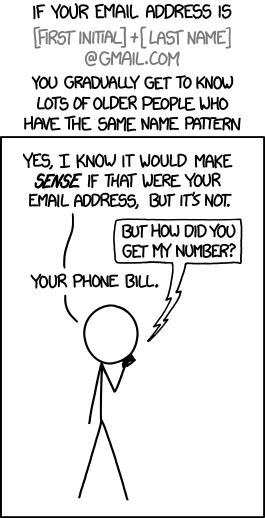Marketers often treat recipient inboxes with a certain level of ownership. They talk about getting mail to the inbox with the underlying implication that inboxes are for use by marketers and they tend to forget that recipients use email for a lot of things, not just being marketing targets.
This was crystallized for me a few years ago when I was running a conference session. The session had a very diverse group of attendees and as part of the session they broke up into smaller groups to talk about various email related topics. One of the questions was how do people use email. Those groups with more ISP representatives produced a list with dozens of ways people use email. The groups dominated with email marketers, though, came up with a much more limited set of uses, all of them related to marketing or commerce. They didn’t mention mailing lists or one on one discussions or connecting with friends as part of the things people use email for.
Marketers seem to forget that email was not adopted by users so they could be marketed to. In fact, email is primarily used by people to interact with friends, colleagues, allies and family members. Most recipients really don’t really care about marketing in their inbox. They’re much more interested in the mail from mom with pictures of the new puppy. They’re looking for that mail from a friend linking to a silly video. They’re deeply involved in an online discussion with friends or colleagues about anything at all.
This doesn’t mean they don’t want marketing in their inbox. Every subscription is an invitation to visit the recipient’s mailbox. They are inviting a sales person to visit them at home or at work; spaces where marketers are not traditionally invited.
The problem is that a lot of email marketers do not respect the space they’ve been invited into. They assume, usually incorrectly, they are being given ownership of that space. The marketer sees the inbox as their marketing space, not as space that the recipient feels ownership over.
When someone buys a magazine or watches TV, there are a lot of ads, but that’s OK because they don’t feel any ownership of those spaces. But when they subscribe to something in email, they don’t cede ownership of their inbox to the senders. It is still their inbox and marketers are there only because the recipient invited them. The recipient will kick marketers out if they start writing on the walls or otherwise disrespecting their space.
Many delivery consultants talk about engagement and sending timely, relevant email. All of those are really coded phrases meaning “when you’re invited into somebody’s house don’t scrawl on the walls or poop on the carpets.”
Read More